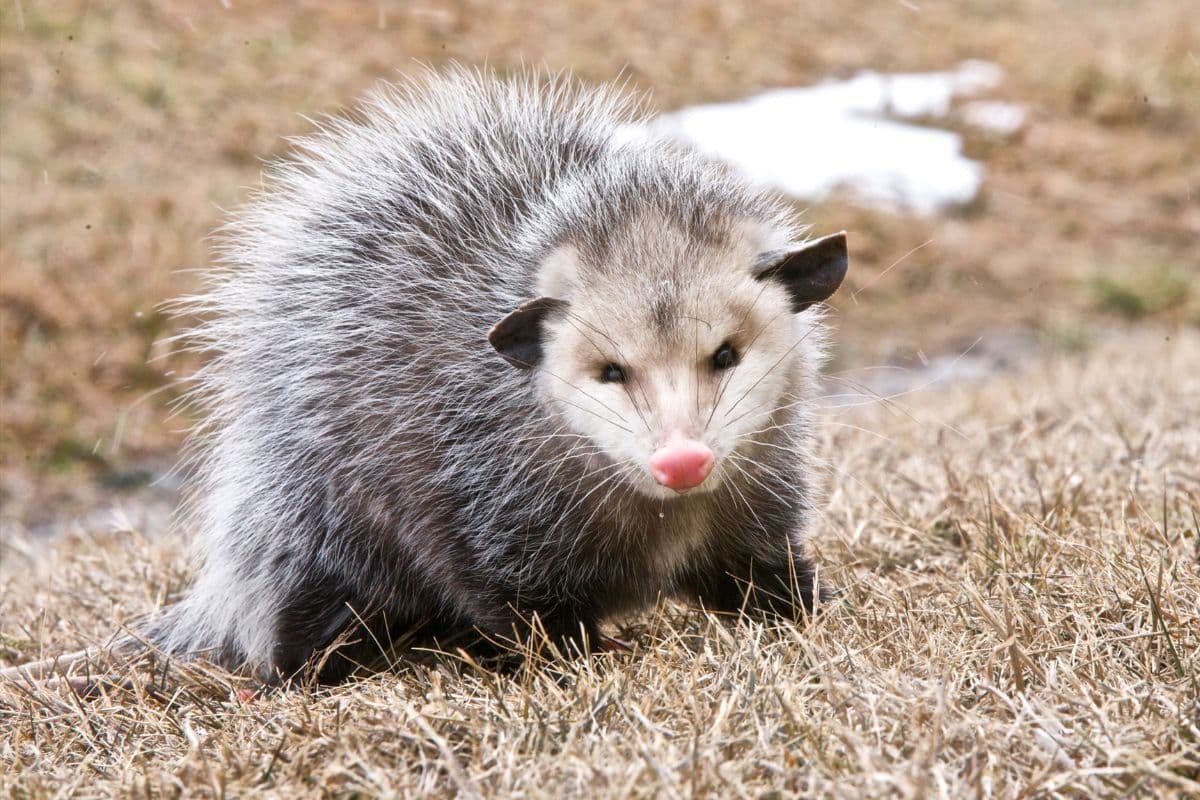Opossums are fascinating creatures with unique dietary habits that allow them to thrive in various environments. These marsupials, native to the Americas, have adapted to consume a remarkably diverse menu of foods. Understanding what opossums eat helps us appreciate their role in our ecosystems and how they survive in both wild and urban settings.
Natural diet of opossums in the wild
Opossums are true omnivores with a highly adaptable diet that changes with seasons and habitat. In their natural woodland habitats, these resilient marsupials consume an impressive variety of foods that help maintain ecological balance.
Insects and other invertebrates form a substantial part of an opossum’s natural diet. They eagerly hunt beetles, crickets, cockroaches, slugs, and snails. Their appetite for ticks is particularly notable, with a single opossum capable of consuming up to 5,000 ticks in one season, making them valuable allies in reducing Lyme disease transmission.
Small vertebrates also feature prominently in their diet. Opossums will hunt and eat:
- Mice and other small rodents
- Small snakes (they’re resistant to some snake venoms)
- Frogs and toads
- Bird eggs and nestlings
- Small fish in shallow water
Fruits and vegetation constitute a significant portion of their diet when available. Opossums are particularly fond of fallen apples and other orchard fruits they find on the ground. They’ll also eat berries, nuts, grasses, and various plant materials.
During autumn months, opossums may consume fallen fruits and nuts to build up fat reserves. Their ability to climb trees gives them access to fruits like papayas and other tree-borne foods that ground-dwelling mammals can’t reach.
Urban opossum eating habits
As human development has expanded, opossums have successfully adapted to urban and suburban environments. Their dietary flexibility has proven crucial to this adaptation, allowing them to take advantage of food sources created by human activity.
Human food waste provides abundant calories for urban opossums. They readily raid unsecured garbage cans, compost piles, and outdoor pet food bowls. While this opportunistic feeding benefits the opossum, it can sometimes create conflicts with homeowners.
Urban opossums continue their valuable service of pest control, consuming rodents and insects that plague human dwellings. They help manage populations of mice, rats, cockroaches, and other household pests. Many gardeners appreciate opossums for consuming garden pests like slugs, snails, and various insects.
Road-killed animals unfortunately become food sources for urban opossums, which explains why opossums themselves are often victims of vehicle collisions. Their scavenging behavior around roadways puts them at considerable risk.
Some urban opossums develop preferences for certain garden vegetables and can become regular visitors to vegetable gardens. They may develop a taste for colorful vegetables like Chioggia beets or sample various leafy greens growing in gardens. Homeowners who maintain backyard or office gardens sometimes report opossum visits.
Seasonal variations in opossum diet
The opossum diet undergoes significant changes throughout the year as food availability fluctuates with the seasons. These adaptable creatures adjust their feeding strategies to make the most of whatever resources are currently abundant.
In spring, opossums increase their consumption of protein-rich foods to recover from winter weight loss. This includes more active hunting of small animals and insects as these food sources become more available. Spring also brings new plant growth, and opossums will consume tender shoots, fresh vegetation like garlic scapes, and early fruits.
Summer provides the greatest abundance and variety in the opossum diet. During warmer months, they consume:
- A peak amount of insects and other invertebrates
- Ripening fruits and berries
- Garden vegetables and crops
- A variety of plant materials
Fall feeding behavior focuses on calorie-dense foods to build fat reserves for winter. Opossums increase consumption of nuts, seeds, and fallen fruits, especially those high in fat and carbohydrates. They may visit areas with fruit trees more frequently during this season.
Winter presents the greatest dietary challenge for opossums. These animals don’t truly hibernate but enter periods of decreased activity during cold spells. They rely more heavily on scavenging during winter months when hunting becomes difficult. Opossums may visit human settlements more frequently in winter when natural food sources are scarce.
Nutritional benefits of opossum feeding habits
The diverse diet of opossums delivers significant ecological benefits beyond just sustaining the animals themselves. Their feeding habits impact ecosystem health in ways that many people don’t realize.
Pest control services provided by opossums benefit both natural areas and human settlements. Their consumption of ticks helps reduce disease transmission to humans and other animals. By eating carrion, opossums help clean up ecosystems and reduce disease spread from decomposing animals.
Opossums’ consumption of root vegetables like beets and fallen fruits helps disperse seeds through their droppings, aiding plant reproduction. Their droppings also return nutrients to the soil, supporting plant growth in their habitats.
The opossum’s immune system allows them to consume some toxic substances that would harm other animals, including certain mushrooms and rotting materials. This unique ability lets them occupy ecological niches that other mammals cannot.
Despite common misconceptions, healthy opossums rarely spread diseases to humans or pets. Their low body temperature makes them poor hosts for rabies virus, and they generally avoid confrontation with humans and domestic animals.
Understanding what opossums eat helps us appreciate these remarkable marsupials for their adaptability and ecological contributions. From consuming thousands of disease-carrying ticks to cleaning up fallen fruits and controlling rodent populations, the opossum’s varied diet makes them valuable neighbors in both wild and urban environments.

